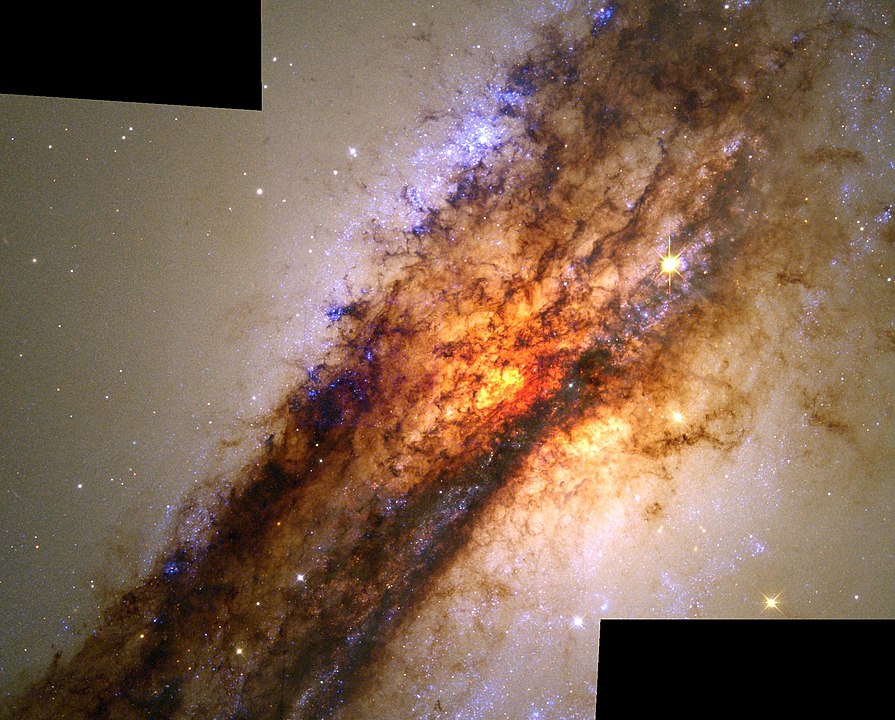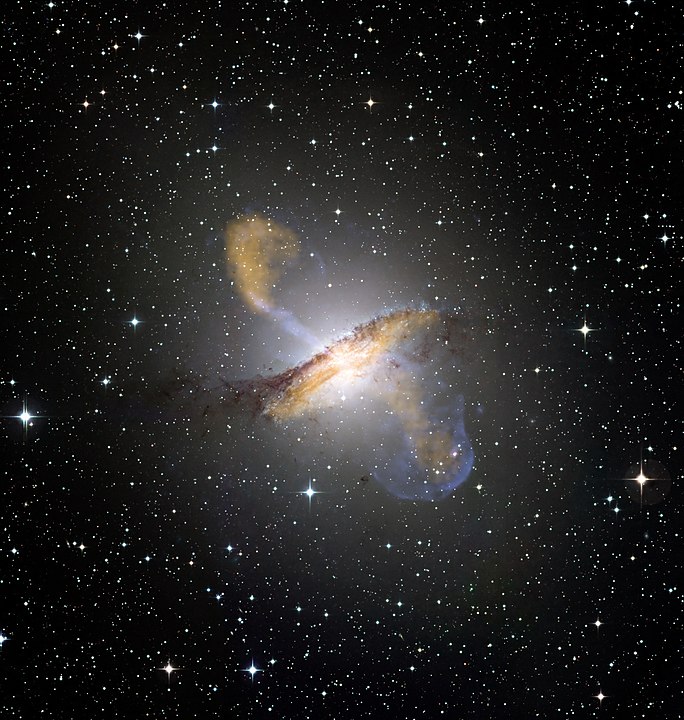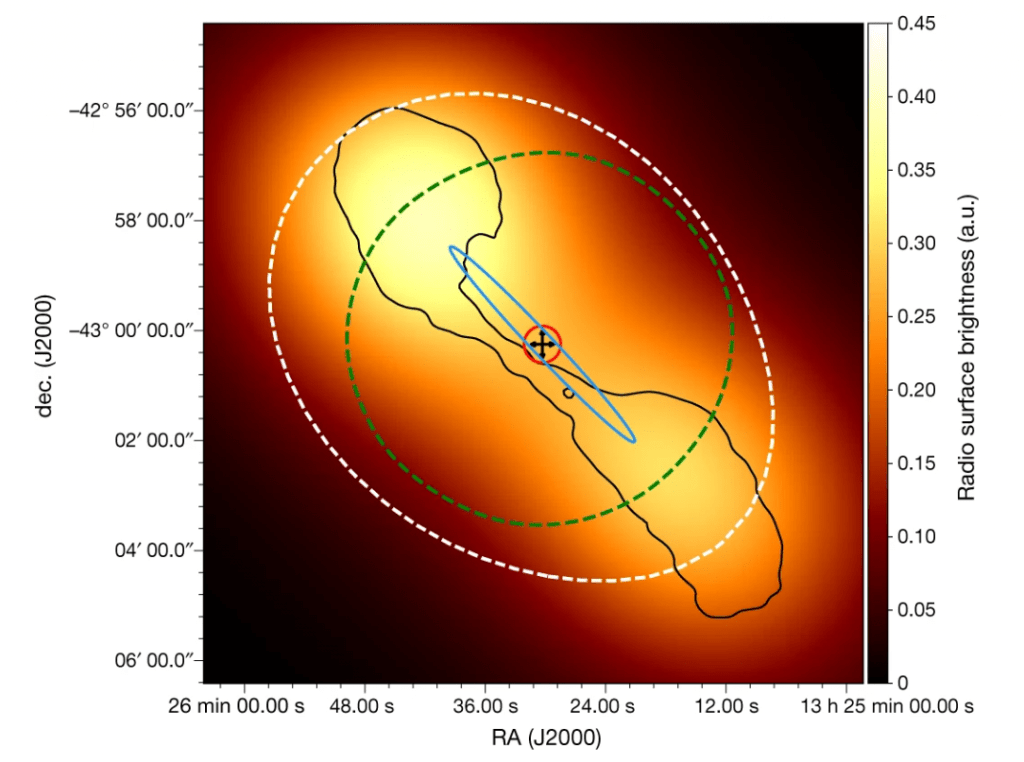We puny humans think we can accelerate particles? Look how proud we are of the Large Hadron Collider. But any particle accelerator we build will pale in comparison to Quasars, nature’s champion accelerators.
Those things are beasts.
The term quasar is a contraction—albeit a clumsy one—of “quasi-stellar radio source.” When they were first discovered in the 1950s, it was because of their unexplained radio emissions. In images, they were just star-like points of light. So they were tagged as quasi-stellar radio sources.
A quasar is actually an active galactic nucleus (AGN); and an extremely luminous one.
An AGN is the compact, crowded central region of a galaxy. The intense luminosity that radiates from an AGN is not from starlight, research shows. There’s something else there.

Most large galaxies, maybe all, have a supermassive black hole (SMBH) at their center. Rotating around that hole is an accretion disk of material, drawn to the black hole’s powerful gravitational pull. Material in the rotating disk gets accelerated to relativistic speeds. As it accelerates, it heats up, and begins to shine.
AGN are the most persistenly luminous objects we know of. And quasars are the most powerful AGNs. Astronomers have observed quasars’ intense electromagnetic radiation across the entire spectrum, from radio waves to gamma rays.
A new study looked at the energy coming from quasars. They focused on the highest-energy emissions—gamma rays—and found that the source of their emissions isn’t restricted to the central region alone, and the accretion disk that sits there. Instead, gamma ray emissions also come from plasma jets that are thousands of light years long, and extend outward from the central region.

The title of this new study is “Resolving acceleration to very high energies along the jet of Centaurus A.” It’s authored collaboratively by the H.E.S.S. Collaboration, a group of over 200 researchers from 13 countries. The paper is published in the journal Nature.
Centaurus A, also called NGC 5128, is the closest radio galaxy to us, so its AGN has been extensively studied. It’s also very bright, so amateur astronomers know it well. The details of its structure are pretty well known.

But the results of this new study are posing new questions for our understanding of quasars.
Gamma rays are made up of extremely high-energy photons. Observing them is key to studying the most energetic things in the Universe, like quasars.
H.E.S.S. stands for High Energy Stereoscopic System. It’s an array of antennae in Namibia that studies very high energy (VHE) gamma ray astrophysics. For this work, H.E.S.S. spent more than 200 hours observing Centaurus A at high resolution. Researchers were able to both study the trajectory of the plasma jets, and identify the source of the high energy radiation.

They found that the gamma radiation came not only from the central region of the galaxy, near the black hole and its accretion disk, but also from the jets. And those jets extend for thousands of light years. What this means is that particle acceleration is not limited to the accretion disk at a quasar, but that the jets themselves also act as particle accelerators, thousands of light years in length.

One result of this study is that these jets, and their high energy radiation, may be the source of a substantial amount of the background gamma rays in the Universe.
There are a lot of radio galaxies in the Universe. If further research shows that other quasars are also emitting gamma radiation along the thousand-light-year length of their relativistic jets, then that would go a long way to explaining the Universe’s background gamma radiation.
H.E.S.S. is currently the most sensitive gamma ray observatory we have. But soon, the Cherenkov Telescope Array (CTA) will be in full operation. That facility will allow for even more detailed observations of Centaurus A and other quasars.
Normally, gamma rays are not observable from Earth, and it’s up to space observatories like the Fermi Gamma-ray Space Telescope to ferret them out. But H.E.S.S. and the CTA Array take a different approach.
Both H.E.S.S. and the Cherenkov Telescope Array measure the phenomenon of Cherenkov radiation. When high energy gamma rays strike Earth’s atmosphere, they sometimes produce electron/positron pairs with extremely high velocities. Those particles emit what’s called Cherenkov radiation if their velocity is greater than light itself in the medium of the atmosphere.
More:
- Press Release: Quasar jets are particle accelerators thousands of light-years long
- Research Paper: Resolving acceleration to very high energies along the jet of Centaurus A
- Universe Today: Gamma Rays Detected Coming From the Crab Nebula

